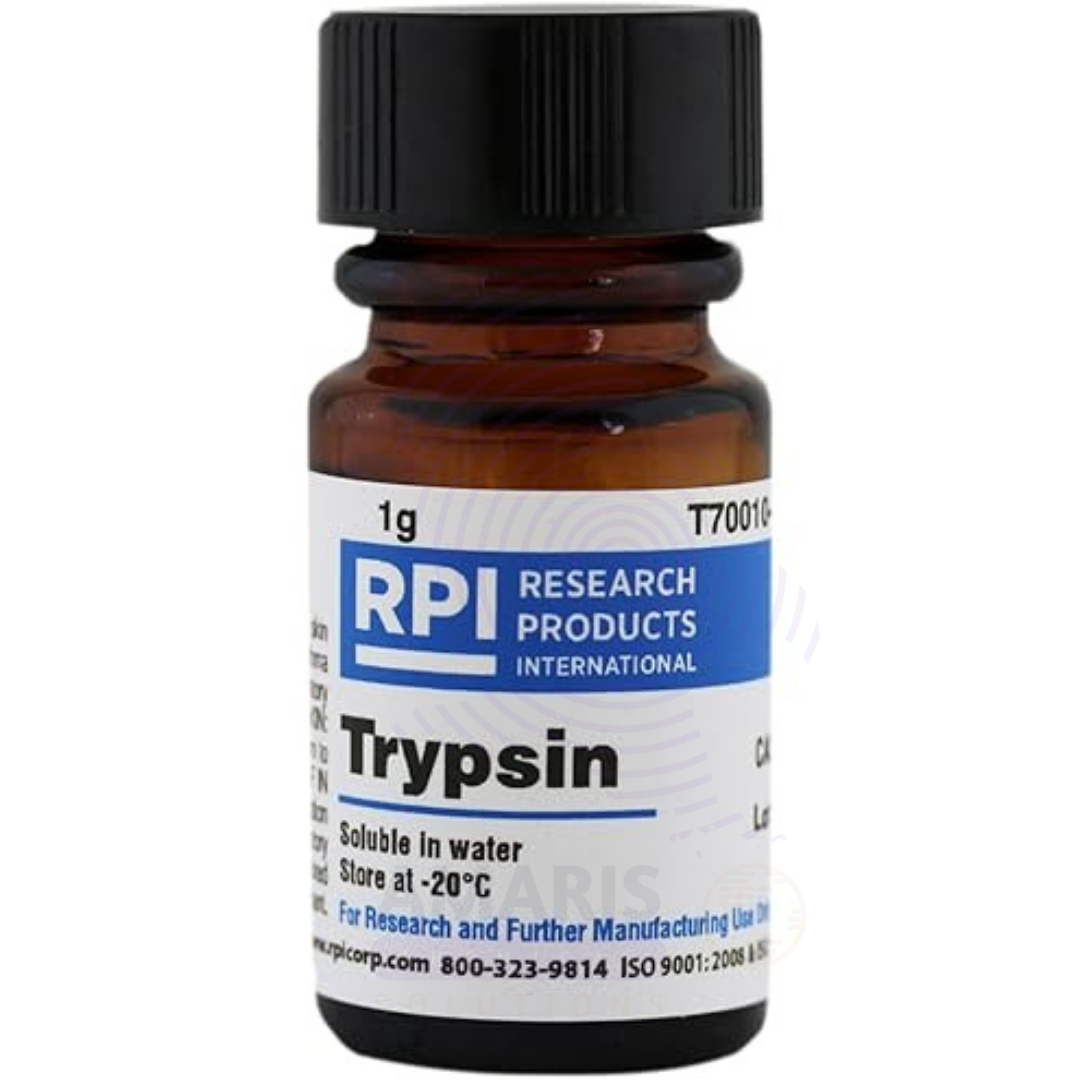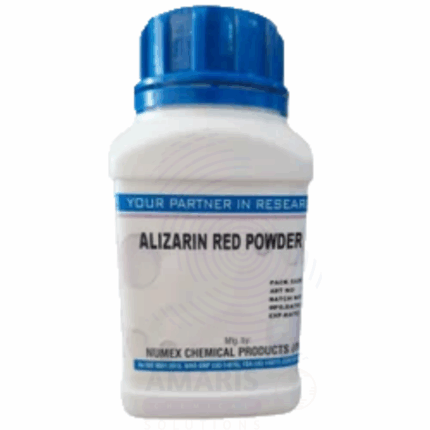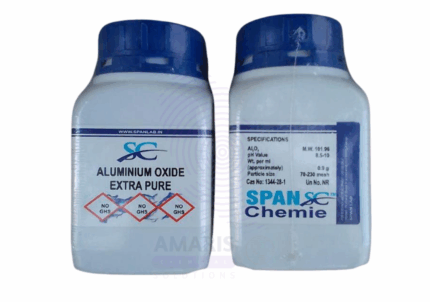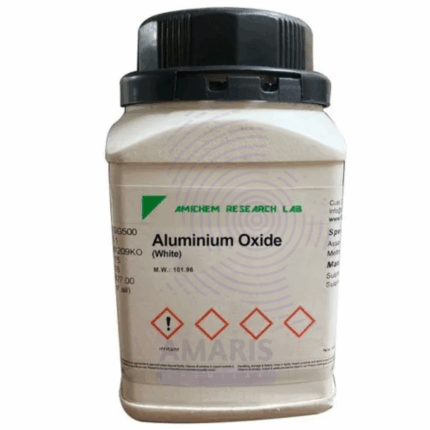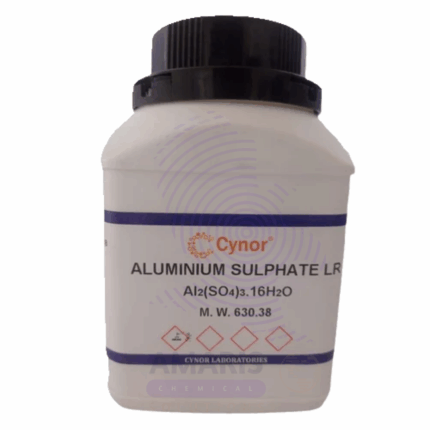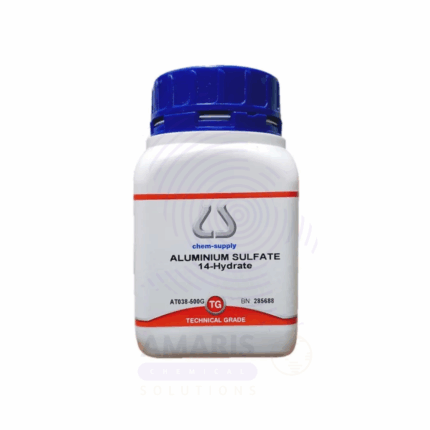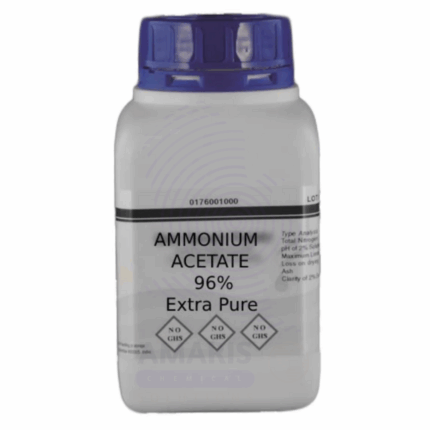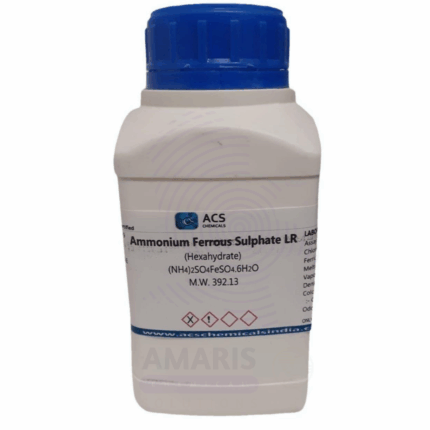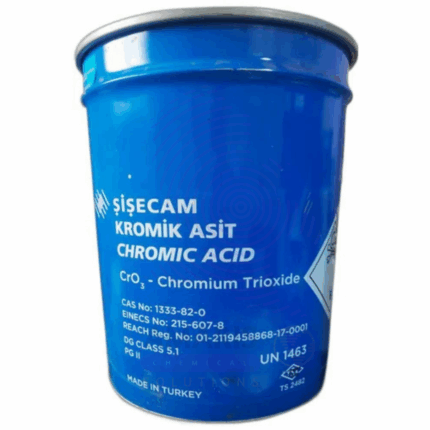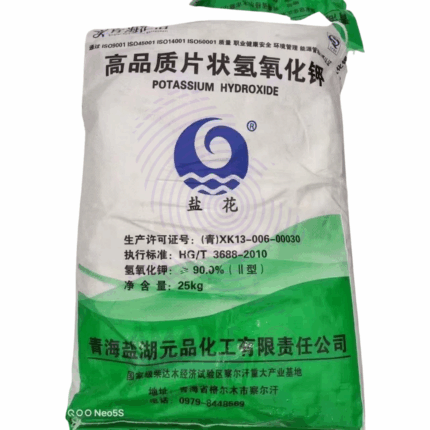Back to products


Urea Extra Pure
$ 18.00 Original price was: $ 18.00.$ 17.89Current price is: $ 17.89.
Trypsin Extra Pure
$ 18.16
Whatsapp Order
Trypsin Extra Pure is a high-purity, proteolytic enzyme derived from porcine pancreas, commonly used for its ability to hydrolyze peptide bonds in proteins at the carboxyl side of lysine and arginine residues. Supplied as a white to off-white lyophilized powder, Trypsin Extra Pure is ideal for laboratory applications requiring precise protein digestion, including cell culture detachment, protein sequencing, and enzymatic hydrolysis. Its extra pure grade ensures minimal contamination from other enzymes or impurities, making it suitable for sensitive biochemical and molecular biology workflows.
Description
Table of Contents
Toggle
Trypsin Extra Pure
PRIMARY USES
- Analytical Reagent & Laboratory Applications
Widely used proteolytic enzyme for digestion of proteins in biochemical, molecular biology, and proteomics research
• Used to detach adherent cells from culture vessels in cell biology and tissue culture labs
• Essential in enzymatic digestion protocols for peptide mapping, protein sequencing, and mass spectrometry sample preparation
• Applied in protein modification and cleavage studies
• Key reagent in tissue dissociation for cell isolation and organotypic cultures - Pharmaceutical & Diagnostic Applications
Component in enzyme formulations for wound debridement and treatment of burns
• Used in digestive enzyme supplements and enzyme replacement therapies
• Utilized in diagnostic kits requiring proteolytic processing of samples
• Employed in pharmaceutical manufacturing for protein processing and modification
SECONDARY USES
- Food Industry
Employed in hydrolysis of proteins to produce protein hydrolysates and bioactive peptides used as flavor enhancers and nutritional supplements
• Used for processing of animal-based protein products to improve digestibility - Cosmetic Industry
Incorporated into exfoliating and skin renewal formulations due to its protein digestion capability
• Used in anti-aging and skin peeling products to promote skin texture improvement - Biotechnological Research
Utilized in recombinant protein production workflows
• Employed in cell line development and scale-up processes for cell detachment
KEY PRODUCT FEATURES
1. Basic Identification
- Chemical Name: Trypsin (from bovine pancreas or porcine sources)
- CAS Number: 9002-07-7
- HS Code: 3507.90.00
- Molecular Formula: Protein enzyme (variable, dependent on source)
- Synonyms: Protease, Pancreatic Trypsin, Proteolytic Enzyme, Trypsin USP Grade
2. Physical & Chemical Properties
- Physical State: Off-white to pale yellow fine powder
- Odor: Mild characteristic proteinaceous odor
- Melting Point: Not applicable (denatures upon heating)
- Density: Variable; powder bulk density approx. 0.3-0.6 g/cm³
- Solubility: Soluble in aqueous buffers, especially at pH 7–9
- pH Stability: Active in pH range 7–9; inactive in strongly acidic or alkaline conditions
- Activity: Protease activity measured in USP units, BAEE units, or casein digestion units
- Flash Point: Not applicable
- Vapor Pressure: Not applicable
3. Safety & Hazard Attributes
- GHS Classification: Skin sensitization (Category 1), Respiratory sensitization (Category 1)
- NFPA Ratings: Health - 2 (due to allergenic potential), Flammability - 0, Reactivity - 0
- Exposure Limits: Avoid inhalation; no established OSHA PEL but use dust control measures
- Reactivity: Stable under recommended storage; denatures at high temperature and extreme pH
- Allergen: Potential respiratory and skin sensitizer—handle with care
4. Storage & Handling
- Store in a cool (2–8 °C), dry place protected from light and moisture
- Keep container tightly closed to prevent contamination and moisture uptake
- Use personal protective equipment (gloves, lab coat, goggles) and dust mask or respirator when handling powder
- Avoid exposure to heat, moisture, and protease inhibitors
- Shelf Life: Typically 1–2 years under recommended conditions
5. Regulatory & Compliance
- Complies with USP standards for pharmaceutical grade enzymes
- Approved for use in pharmaceutical, diagnostic, and food-grade applications (where applicable)
- Not classified as hazardous for transport
- Listed in major chemical inventories such as TSCA and REACH
6. Environmental & Health Impact
- Biodegradable protein enzyme with minimal environmental persistence
- Low ecotoxicity but may cause allergic reactions upon repeated exposure
- Safe disposal recommended as per local environmental regulations
SAFETY HANDLING PRECAUTIONS
SAFETY PRECAUTIONS
- Wear chemical-resistant gloves, lab coat, and safety goggles during handling
- Use appropriate respiratory protection (dust mask or respirator) to avoid inhaling powder
- Handle in a well-ventilated area or fume hood
- Avoid skin and eye contact
- Wash hands and exposed skin thoroughly after handling
- Avoid creating dust clouds
FIRST AID MEASURES
- Inhalation: Move to fresh air immediately; seek medical attention if respiratory irritation or allergic symptoms develop
- Skin Contact: Wash affected area with soap and water; remove contaminated clothing; seek medical advice if irritation or rash develops
- Eye Contact: Rinse immediately with plenty of water for at least 15 minutes; seek medical attention if irritation persists
- Ingestion: Rinse mouth; do not induce vomiting; seek medical attention if symptoms appear
FIRE FIGHTING MEASURES
- Non-flammable and non-combustible
- Use appropriate extinguishing media (water spray, foam, dry chemical, CO₂) for surrounding fire
- Firefighters should wear protective gear and self-contained breathing apparatus (SCBA) if exposed to dust or decomposition products
- Thermal decomposition may release nitrogen oxides and other toxic fumes
Related products
Alizarin Extra Pure
Alizarin Extra Pure is a high-grade anthraquinone-based dye, presented as a reddish-brown crystalline powder, renowned for its vivid coloration and strong affinity for metal ions. It is primarily used in analytical chemistry as a complexometric indicator, especially for detecting aluminum, calcium, and other metal ions through color change. Due to its exceptional purity, it is also employed in histological staining, textile research, and pigment synthesis where precision and consistency are critical. Alizarin Extra Pure offers excellent stability and intense coloration, making it ideal for scientific, educational, and specialized industrial applications. Proper storage in a cool, dry environment is essential to maintain its effectiveness and prevent degradation.
Aluminium Oxide Extra Pure
Aluminium Oxide Extra Pure is a high-purity, white, odorless crystalline powder widely used in laboratory applications for its chemical stability, hardness, and high melting point. It serves as a reliable reagent in inorganic synthesis, a polishing and grinding medium in sample preparation, and a support material for catalysts in chemical reactions. This form of alumina is also used in adsorption studies, ceramic research, and as a desiccant in controlled drying processes. Its extra pure grade ensures minimal contamination, making it suitable for sensitive analytical work and high-precision experiments. For optimal performance, it should be stored in a dry, tightly sealed container to prevent moisture absorption and maintain its physical integrity.
Aluminium Sulphate Anhydrous Extra Pure
Aluminium Sulphate Anhydrous Extra Pure is a high-purity, white crystalline or powdery solid commonly used in laboratory chemistry as a source of aluminum ions for precipitation, titration, and coordination studies. Its anhydrous form provides a concentrated and stable option for applications requiring precise control over water content, such as analytical reagent preparation, pH adjustment, and synthesis of other aluminum salts. This compound is also used in paper sizing experiments, dye fixation, and water treatment research. The extra pure grade ensures very low levels of contaminants, supporting accurate and reproducible results in sensitive experimental work. It should be stored in airtight containers in a dry area to prevent moisture absorption and preserve its chemical integrity.
Aluminium Sulphate Hydrous Extra Pure
Aluminium Sulphate Hydrous Extra Pure is a high-purity, white to slightly off-white crystalline compound containing bound water molecules, commonly used in laboratory settings for analytical, inorganic, and coordination chemistry. It serves as a reliable source of aluminum ions in aqueous solutions and is frequently employed in precipitation reactions, dye fixation studies, and flocculation experiments. The hydrous form offers improved solubility and ease of handling, making it suitable for educational labs and controlled research environments. Its extra pure grade ensures minimal interference from impurities, enabling accurate, reproducible results in sensitive analytical procedures. To maintain its stability and prevent further hydration or contamination, it should be stored in well-sealed containers in a cool, dry place.
Ammonium Acetate Extra Pure
Ammonium Acetate Extra Pure is a high-purity, white crystalline solid that is highly soluble in water and commonly used as a buffer component in laboratory and analytical chemistry. It is especially valuable in high-performance liquid chromatography (HPLC), mass spectrometry, and biochemical assays where pH control and minimal ionic interference are essential. This compound also serves as a reagent in organic synthesis, particularly in the preparation of acetamides and other nitrogen-containing compounds. Its extra pure grade ensures excellent consistency, low contaminant levels, and compatibility with sensitive instrumentation. To maintain stability and prevent moisture absorption, it should be stored in a tightly sealed container in a cool, dry environment.
Ammonium Ferrous Sulphate Extra Pure
Ammonium Ferrous Sulphate Extra Pure, also known as Mohr’s salt, is a high-purity, light green crystalline compound composed of ferrous sulfate and ammonium sulfate. It is widely used in laboratory settings as a stable source of ferrous ions for redox titrations, particularly in permanganometric and dichromate analyses. Its stability in air, compared to other iron(II) salts, makes it ideal for preparing standard solutions and studying oxidation-reduction reactions. This compound is also valuable in coordination chemistry and iron metabolism research. The extra pure grade ensures minimal contamination, supporting precise analytical and experimental results. It should be stored in tightly sealed containers in a cool, dry place to prevent oxidation and maintain its integrity.
Chromic Acid
Chromic Acid is a powerful oxidizing agent, typically available as a bright orange-red crystalline solid or concentrated solution containing chromium trioxide (CrO₃) dissolved in sulfuric acid. It is a highly corrosive and strong acid used predominantly in industrial applications such as metal finishing, cleaning, and surface treatment. Chromic acid is valued for its excellent oxidative and cleaning properties, particularly in chromium plating, anodizing, and etching processes. Due to its toxicity and environmental hazards, its handling and disposal are strictly regulated. It plays a crucial role in chemical synthesis, laboratories, and manufacturing.
Potassium Hydroxide
Potassium Hydroxide is a highly concentrated, caustic alkaline chemical available as a solid (pellets, flakes) or concentrated aqueous solution. It is a strong base widely used in industrial processes, chemical manufacturing, and as a reagent. Potassium Hydroxide provides excellent neutralizing, saponifying, and cleaning properties and is essential in producing potassium soaps, biodiesel, fertilizers, and various chemical compounds. Its high purity and concentration (90%) make it suitable for demanding applications requiring strong alkalinity.


 Preservatives(food)
Preservatives(food) Flavor Enhancers
Flavor Enhancers Acidulants
Acidulants Sweeteners
Sweeteners Antioxidants
Antioxidants Colorants(food)
Colorants(food) Nutraceutical Ingredients (food)
Nutraceutical Ingredients (food) Nutrient Supplements
Nutrient Supplements Emulsifiers
Emulsifiers
 Collectors
Collectors Dust Suppressants
Dust Suppressants Explosives and Blasting Agents
Explosives and Blasting Agents Flocculants and Coagulants
Flocculants and Coagulants Frothers
Frothers Leaching Agents
Leaching Agents pH Modifiers
pH Modifiers Precious Metal Extraction Agents
Precious Metal Extraction Agents
 Antioxidants(plastic)
Antioxidants(plastic) Colorants (Pigments, Dyes)
Colorants (Pigments, Dyes) Fillers and Reinforcements
Fillers and Reinforcements Flame Retardants
Flame Retardants Monomers
Monomers Plasticizers
Plasticizers Polymerization Initiators
Polymerization Initiators Stabilizers (UV, Heat)
Stabilizers (UV, Heat)
 Antifoaming Agents
Antifoaming Agents Chelating Agents
Chelating Agents Coagulants and Flocculants
Coagulants and Flocculants Corrosion Inhibitors
Corrosion Inhibitors Disinfectants and Biocides
Disinfectants and Biocides Oxidizing Agents
Oxidizing Agents pH Adjusters
pH Adjusters Scale Inhibitors( water)
Scale Inhibitors( water)
 Antioxidants(cosmetic)
Antioxidants(cosmetic) Emollients
Emollients Fragrances and Essential Oils
Fragrances and Essential Oils Humectants
Humectants Preservatives
Preservatives Surfactants(cosmetic)
Surfactants(cosmetic) Thickeners
Thickeners UV Filters
UV Filters
 Fertilizers
Fertilizers Soil Conditioners
Soil Conditioners Plant Growth Regulators
Plant Growth Regulators Animal Feed Additives
Animal Feed Additives Biostimulants
Biostimulants Pesticides (Herbicides, Insecticides, Fungicides)
Pesticides (Herbicides, Insecticides, Fungicides)
 Active Pharmaceutical Ingredients (APIs)
Active Pharmaceutical Ingredients (APIs) Excipients
Excipients Solvents(pharmaceutical)
Solvents(pharmaceutical) Antibiotics
Antibiotics Antiseptics and Disinfectants
Antiseptics and Disinfectants Vaccine Adjuvants
Vaccine Adjuvants Nutraceutical Ingredients (pharmaceutical)
Nutraceutical Ingredients (pharmaceutical) Analgesics & Antipyretics
Analgesics & Antipyretics
 Analytical Reagents
Analytical Reagents Solvents(lab)
Solvents(lab) Chromatography Chemicals
Chromatography Chemicals Spectroscopy Reagents
Spectroscopy Reagents microbiology-and-cell-culture-reagents
microbiology-and-cell-culture-reagents Molecular Biology Reagents
Molecular Biology Reagents Biochemical Reagents
Biochemical Reagents Inorganic and Organic Standards
Inorganic and Organic Standards Laboratory Safety Chemicals
Laboratory Safety Chemicals Specialty Laboratory Chemicals(Special Laboratory Equipment)
Specialty Laboratory Chemicals(Special Laboratory Equipment)
 Demulsifiers
Demulsifiers Hydraulic Fracturing Fluids
Hydraulic Fracturing Fluids Scale Inhibitors(oil)
Scale Inhibitors(oil) Surfactants(oil)
Surfactants(oil) Drilling Fluids
Drilling Fluids
 Dyes and Pigments
Dyes and Pigments Bleaching Agents
Bleaching Agents Softening Agents
Softening Agents Finishing Agents
Finishing Agents Antistatic Agents
Antistatic Agents
 Admixtures
Admixtures Waterproofing Agents
Waterproofing Agents Sealants and Adhesives
Sealants and Adhesives Curing Compounds
Curing Compounds Concrete Repair Chemicals
Concrete Repair Chemicals Anti-Corrosion Coatings
Anti-Corrosion Coatings
 Surfactants(cleaning)
Surfactants(cleaning) Builders
Builders Enzymes
Enzymes Solvents (Cleaning)
Solvents (Cleaning) Fragrances
Fragrances
 Electronic Chemicals
Electronic Chemicals Catalysts
Catalysts Lubricants
Lubricants Photographic Chemicals
Photographic Chemicals Refrigerants
Refrigerants Automotive chemicals
Automotive chemicals Pyrotechnic Chemicals
Pyrotechnic Chemicals
 Biodegradable Surfactants
Biodegradable Surfactants Bio-based Solvents
Bio-based Solvents Renewable Polymers
Renewable Polymers Carbon Capture Chemicals
Carbon Capture Chemicals Wastewater Treatment Chemicals
Wastewater Treatment Chemicals
 Pigments
Pigments Solvents(paint)
Solvents(paint) Specialty Coatings
Specialty Coatings Binders/Resins
Binders/Resins Additives
Additives Driers
Driers Anti-Corrosion Agents
Anti-Corrosion Agents Functional Coatings
Functional Coatings Application-Specific Coatings
Application-Specific Coatings
 Fresh Herbs
Fresh Herbs Ground Spices
Ground Spices Whole Spices
Whole Spices Spice Blends
Spice Blends Dried Herbs
Dried Herbs
 Leavening Agents
Leavening Agents Dough Conditioners
Dough Conditioners Flour Treatments
Flour Treatments Fat Replacers
Fat Replacers Decoratives
Decoratives Preservatives(baking)
Preservatives(baking)
 Plasticizers & Softeners
Plasticizers & Softeners Reinforcing Agents
Reinforcing Agents Adhesion Promoters
Adhesion Promoters Vulcanizing Agents
Vulcanizing Agents Antidegradants
Antidegradants Blowing Agents
Blowing Agents Fillers & Extenders
Fillers & Extenders Accelerators & Retarders
Accelerators & Retarders